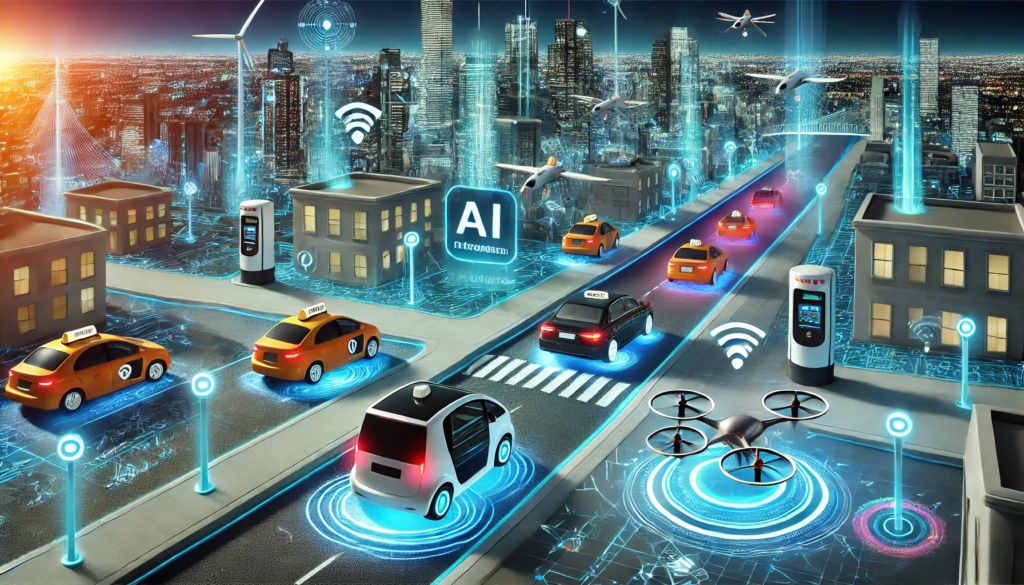The automotive industry is in a transformative era thanks to rapid technological change and a global move towards sustainability. Revolutionary improvements in electrification, autonomous driving, connectivity, and manufacturing are not only redefining what vehicles actually are, but also the future of mobility in general. This in-depth guide covers everything you need to know about Latest Innovations in Automobiles industry and how they can transform travel.
- Electrification: Stepping Up To Green Mobility
- Self-Driving Car: The Next Level of Autonomous Driving
- 5G and the Internet of Things (IoT)
- Automation and Robotics
- Driving Toward a More Sustainable Future
- Vehicle Ownership: The Shared Mobility Story
- Safety Features: Protecting Both Drivers and Passengers
- Replay: Way Ahead: The Future of Mobility
Electrification: Stepping Up To Green Mobility
The shift from internal combustion engines to electric vehicles (EVs) is the bedrock of the automotive industry’s evolution. To curb carbon emissions and comply with stringent regulations in many markets, major automakers are heavily investing in EV technology.
Research and Development in Battery Innovation
Recent development in batteries are overcoming major barriers like range anxiety and charging time. Solid-state batteries innovations provide greater energy densities and faster charging capabilities, which will make EVs more practical for cerain consumers. Moreover, continual investigation into new materials helps to minimize dependency on depleted capacity and creates further sustainably at the level of EVs.
Sustainable, Intermittent Energy Generation
The relationship between EVs and green energy is being reinforced more than ever. EV owners can draw from their home charging stations which are powered by solar panels to reduce their carbon footprint. Additionally, V2G (vehicle-to-grid) technology enables electric vehicles to serve as mobile energy storage devices, helping stabilize the grid by providing power during peak demand times.
Self-Driving Car: The Next Level of Autonomous Driving
It can transform transportation by making it more safe, efficient and accessible.
In most cases, this involves further development of sensor and AI technologies.
Modern cars are fitted with multiple sensors, LiDAR, radar, and cameras that deliver real-time information regarding the environment around the vehicle. Together with AI (artificial intelligence) algorithms, these sensors make it possible for vehicles to understand complex environments and make appropriate decisions. From tech conglomerates such as Amazon to dedicated start-ups, companies such as Tesla and Waymo are leading the way; they’re testing their systems, training and continually refining their autonomous technology.
Ethical and Regulatory Considerations
The ethical and regulatory implications of deploying autonomous vehicles (AVs) are worrisome. Setting up safety standards, establishing liability frameworks and addressing public fears of job displacement is a pressing challenge. Industry stakeholders must stand side by side with policymakers to build a healthy landscape for the introduction of AVs.
Connectivity: Turning Cars into Smart Devices
Automotive and digital technologies are merging, enabling better connectivity, convenience, safety and entertainment capabilities in cars.

5G and the Internet of Things (IoT)
Referencing the deployment of 5G networks, vehicle-to-infrastructure (V2X, if you’ve heard them before) communication is accelerated. This connectivity allows for real-time traffic management, predictive maintenance, and OTA software updates. Urban Mobility Improved: IoT devices can also be used to enhance the quality of urban mobility combining several essential vehicle systems with smart city ecosystems.
Infotainment in Vehicle and Personalization
Modern vehicles come with sophisticated infotainment systems that offer navigation, entertainment, and connectivity features. Another example of the use of AI in vehicles is AI-powered personalization that customizes the driving experience according to the individual preferences of the driver, making it possible for the car to set seat position, climate control, music preferences and much more. The incorporation of such technology in vehicles bolsters driver satisfaction and engagement.
Innovations in Manufacturing: A New Era of Vehicle Production
Updates in manufacturing habits allow for vehicle production which is energy efficient, environmental friendly as well as easier to customizable.
October 2023 — DOLMME — Digital Online Learning through Multiple Modes of Engagement
In automotive manufacturing, the use of 3D printing enables faster prototyping and manufacturing of intricate parts with less material waste. It speeds up development cycles, allows for lightweight construction, and increases the efficiency for the vehicle. Manufacturers can further improve consumer ownership experience by providing more customization options.
Automation and Robotics
Automation and robotics in assembly line increases accuracy and effectiveness. Collaborative robots, or “cobots,” partner with human workers to take on repetitive work and minimize injury potential. It is this combination of human and machine labor that maximizes production processes while still maintaining quality standards.
Driving Toward a More Sustainable Future
Environmental impact is a key consideration behind many innovations in the automotive industry.
Eco-Friendly Materials Development
Research into sustainable materials is resulting in greener vehicles, including biodegradable composites and recycled plastics. These materials have lower impact on the environment during manufacturing and provide recyclability showing contribution to the circular economy.
Manufacturing Processes with Energy Efficiency
The automotive industry has begun implementing energy-saving processes at their production centers, using clean energy resources and optimizing resource consumption. Not only do these efforts decrease greenhouse gas emissions, but they are also aligned with corporate social responsibility goals and improve brand reputation.
Vehicle Ownership: The Shared Mobility Story
Shared mobility is changing old paradigms regarding car ownership and usage.
Ride-Hailing and Car-Sharing Platforms
However, services such as Zipcar and Uber act as substitutes for ownership that have a unique offering cycle that is more flexible and ultimately may reduce traffic and emissions. It serves urban populations looking for affordable and convenient means of transportation.
Linkage with Public Transit
These integrated transportation networks are establishing partnerships between shared mobility providers and public transit systems. Services like ride-hailing as first-mile/last-mile solutions to transit supplement public transportation by improving access and decreasing dependence on private vehicles.
Safety Features: Protecting Both Drivers and Passengers
Safety technologies continue to evolve and improve, increasing the safety of driver and passengers inside the vehicle, as well as those outside of it.
Autonomous Navigation with ADvanced Driver Assistance Systems
Adaptive cruise control, lane-keeping assist and automatic emergency braking are increasingly common in today’s cars. These systems use sensors and AI to track driving conditions and to help drivers avoid potential hazards, thereby minimizing the chances of accidents.
Vehicle-to-Everything (V2X) Communication
Vehicles-to-everything (V2X) technology allows cars to share data with one another and with infrastructure, giving them information in real-time on road conditions, traffic signals
Replay: Way Ahead: The Future of Mobility
Electrification and autonomous driving, connectivity and sustainable manufacturing: the automotive industry is right at the beginning of a technological revolution that will determine the future of mobility. As innovation continues to accelerate, collaboration between automakers, policymakers, and technology leaders will be critical in overcoming challenges, whether it be infrastructure, regulations or public adoption.
Sharing and AI-based personalisation – set to transform the way we know travel – Tim Wojciechowski, Founder / CEO, naissungs APSemcon.com – A comprehensive guide to sharing mobility, causing a new revolution in transport that would be safer, more efficient, and eco-friendly. Top 5 Predictions Of Smart Mobility by The End Of Year 2030: During the next decade seamless incorporation of smart automobiles into urban factors will be executed, bolstering sustainability and international mobility.
Adopting these technologies will demand ongoing investments in research, infrastructure, and public education. The evolution of this sector will define our imminent tomorrow and, as always the future of the land transport will go to those who can adjust to the transformations around, with the promise that everything will be more united, practical and sustainable.


